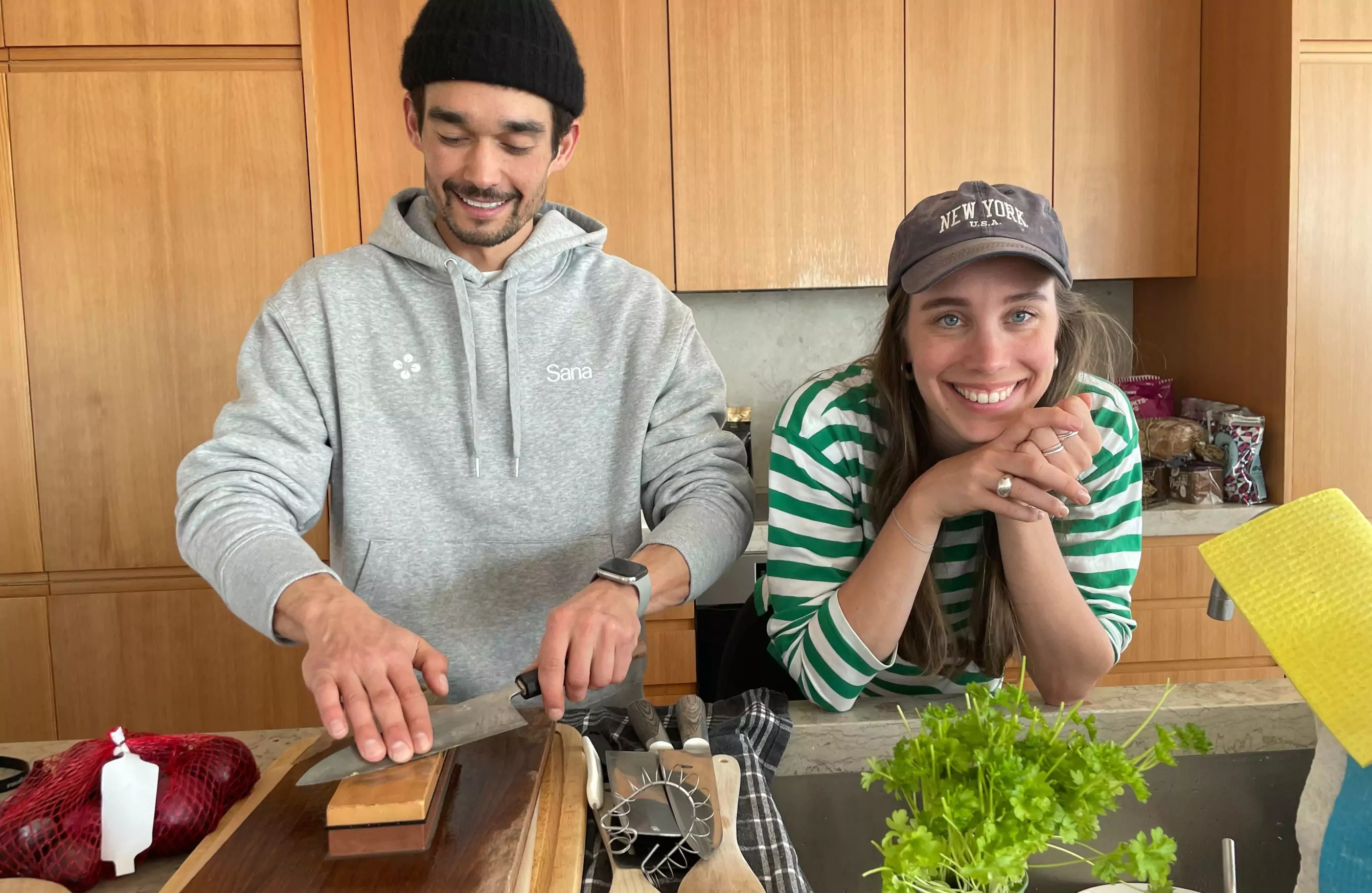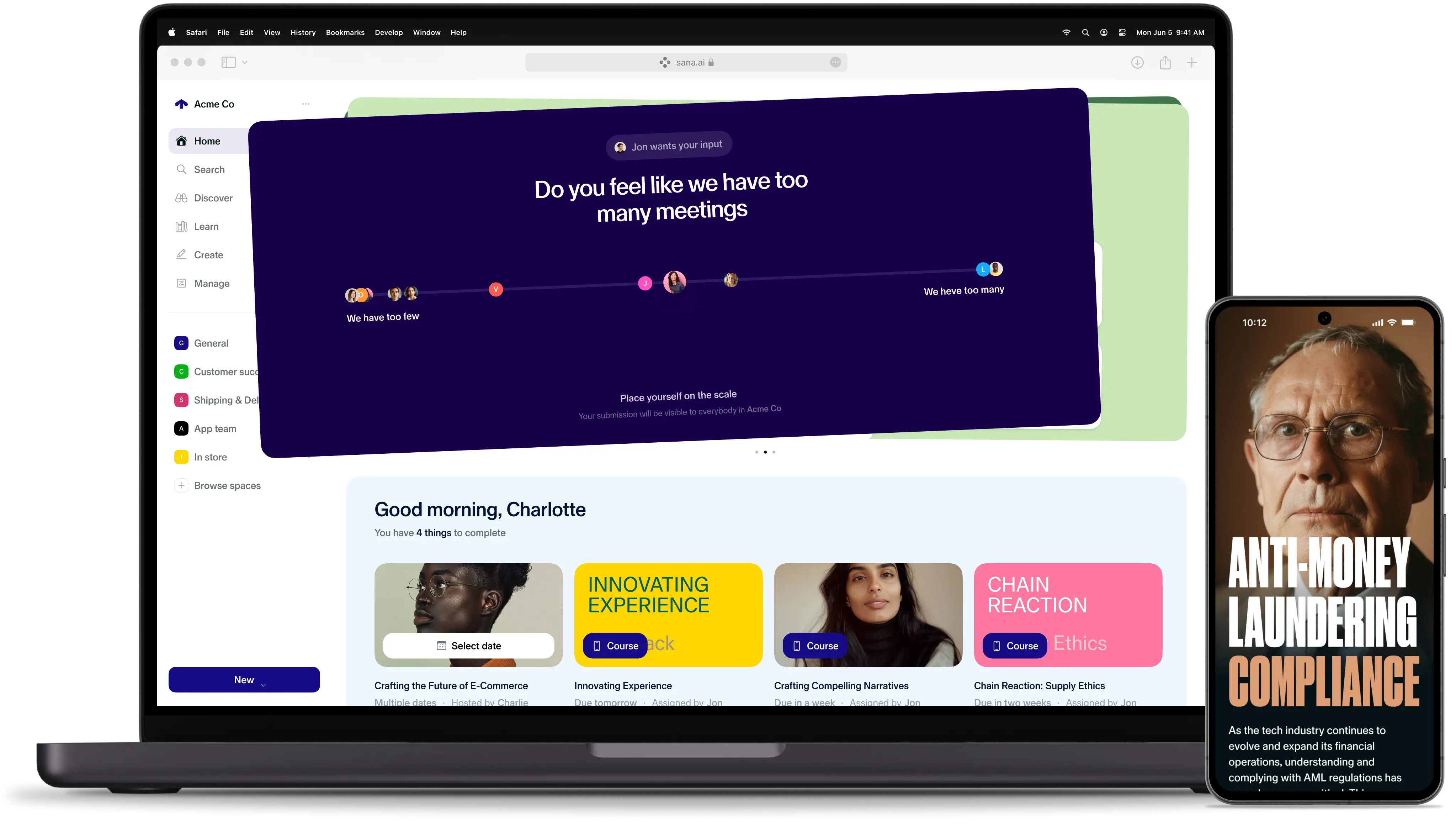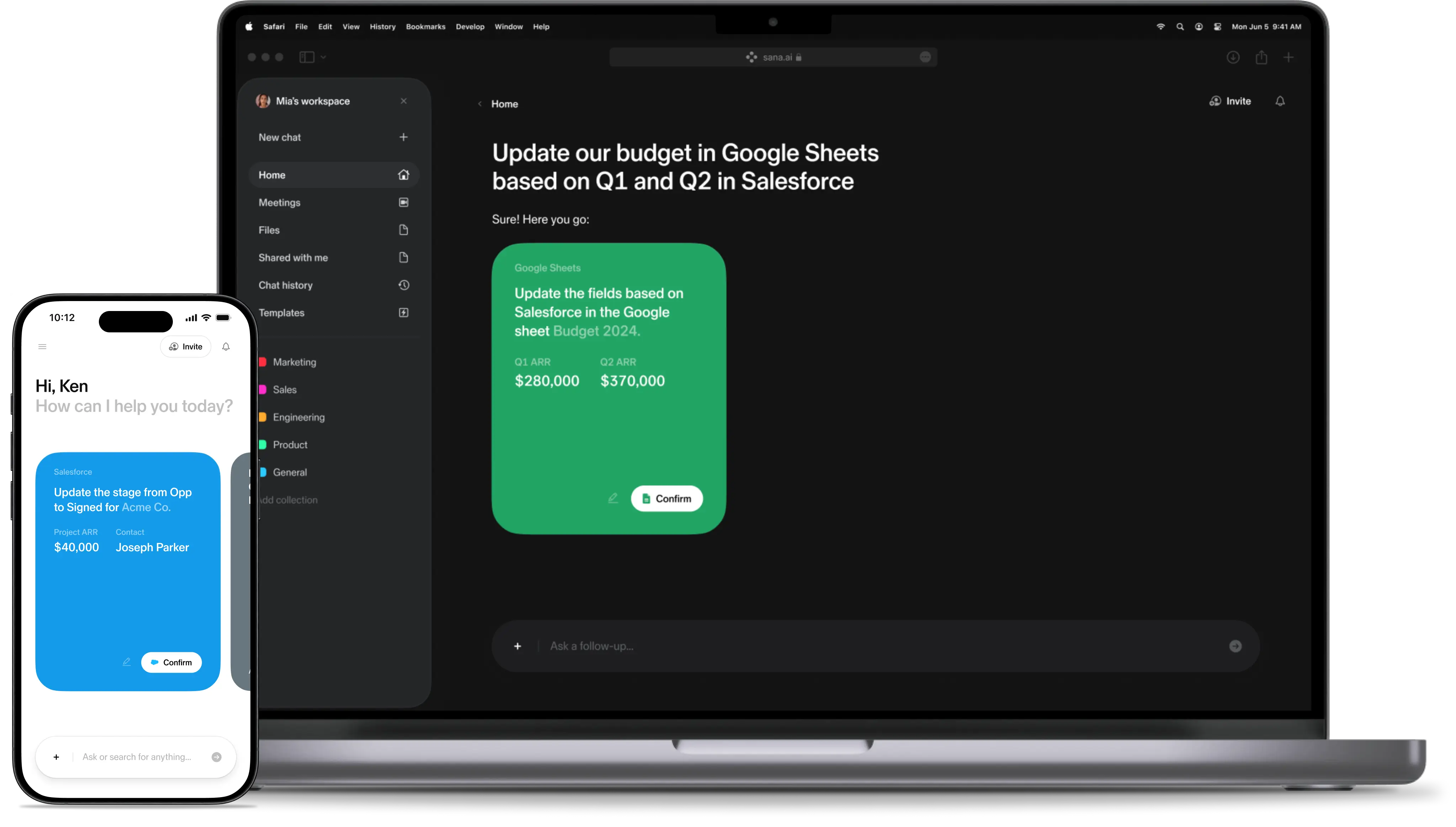How rituals fuel growth
A behind-the-scenes look at Sana’s operating model

Like you, our company has a bold mission. Sana exists to change the way the world learns. To fulfill this mission, every action needs to ladder up to the ultimate goal.
This idea sounds simple in theory. In reality, it raises a lot of fundamental questions about how you organize teams and structure work. When I joined Sana as Chief of Staff, I saw a great opportunity to rethink our cadence and operating model. We landed on an operating cadence called 6/6/6, and it transformed us as a company — boosting everything from product velocity to employee engagement.
This is my articulation of what the 6/6/6 cadence is, how you put it into practice, and why it can transform an organization.
Setting the stage for 6/6/6
What is 6/6/6
The 6/6/6 operating cadence organizes work into periods of 6 years, 6 months, and 6 weeks. It’s tactical and actionable — really hands-on.
Simply put, the 6/6/6 cadence looks like this:
- 6 years: our dreams and the vision about the future
- 6 months: our strategic bets to realize that future
- 6 weeks: our tactics to deliver on the strategic bets
Why we switched to 6/6/6
We were only 30 Sanians when we decided to create our own operating cadence that suited us, and only us. Prior to this decision, we had experimented a lot with different time horizons and objective-setting frameworks. We found OKRs too rigid, and an art to get right (if you have tried it out, you know what I mean).
Locking product teams into 3 month periods didn’t help our team to make changes, or close out dead-ends effectively. Annual goals became meaningless, because so much changes within a year. Something needed to change.
How 6/6/6 helps us
6/6/6 keeps us focused and running in the same direction. At Sana, one of our leadership principles is ‘I will reduce entropy.’ It’s based on a mental model that comes from physics — the second law of thermodynamics states that the entropy of a closed system always increases. In other words, unless you create order and predictability for your organization, it will descend into disorder and chaos over time. 6/6/6 provides just the right amount of structure to mitigate this risk.
Putting 6/6/6 into practice
For each one of the time horizons, we have created our own way of defining what we believe in to make sure everyone is running the same direction.
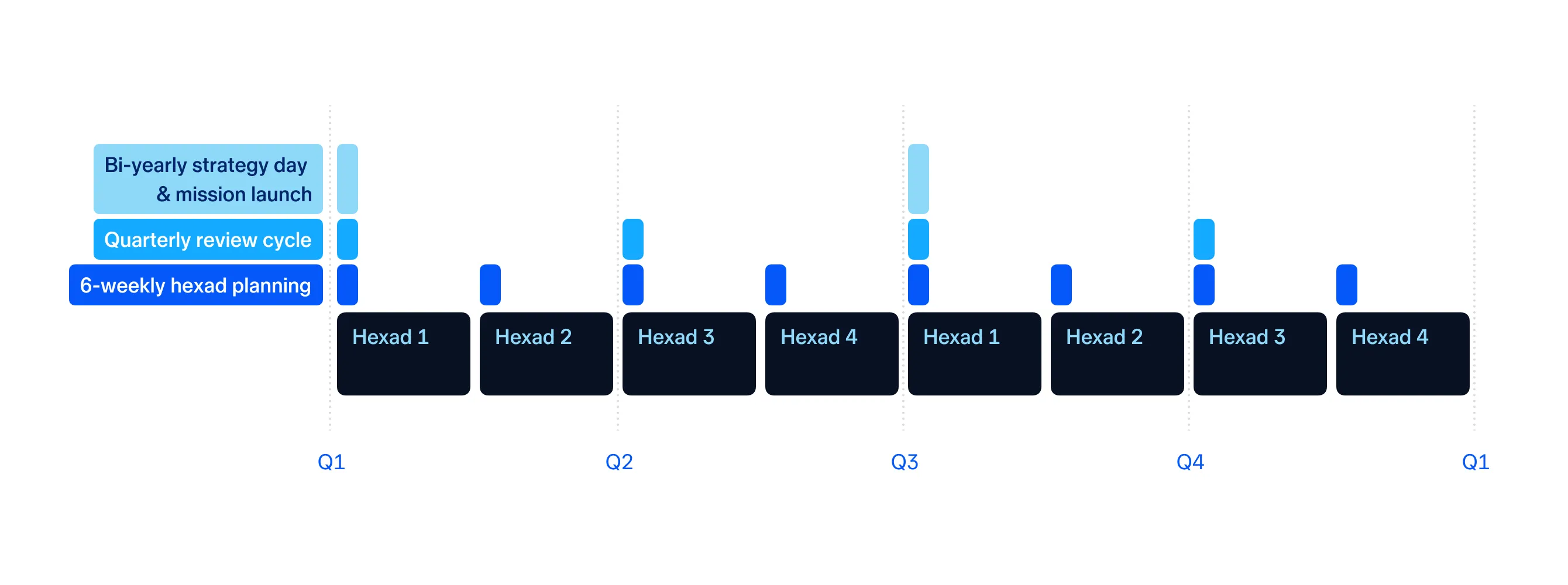
How to set 6 years
We set our 6-year vision by asking ourselves the Hamming question ‘what’s the most important problem in our field?’. At Sana, we believe that learning has the opportunity to power significant leaps in human development. The Wright brothers setting flight. Astra Zeneca creating the first Covid-19 vaccine. These discoveries move the world forward. These changes all start with learning.
To turn the Hamming question into a long-term vision, you have to set ambitious goals. Outrageously ambitious ones. What kind of company will you be if you solve this problem? What impact on the world will you have had? We invest a lot of time in how we present this narrative to our team. After all, it’s our guiding and uniting force — we introduce it with every onboarding cycle, and revisit it periodically in All Hands meetings.
How to set 6 months
Setting our 6 month strategy is a team effort. We need the domain knowledge of every team so we can set an informed direction ahead. At Sana, we set our 6-month strategy through the DIBB framework. It’s a brilliant tactic for making evidenced decisions. It stands for:
- Data
- Insights
- Beliefs
- Bets
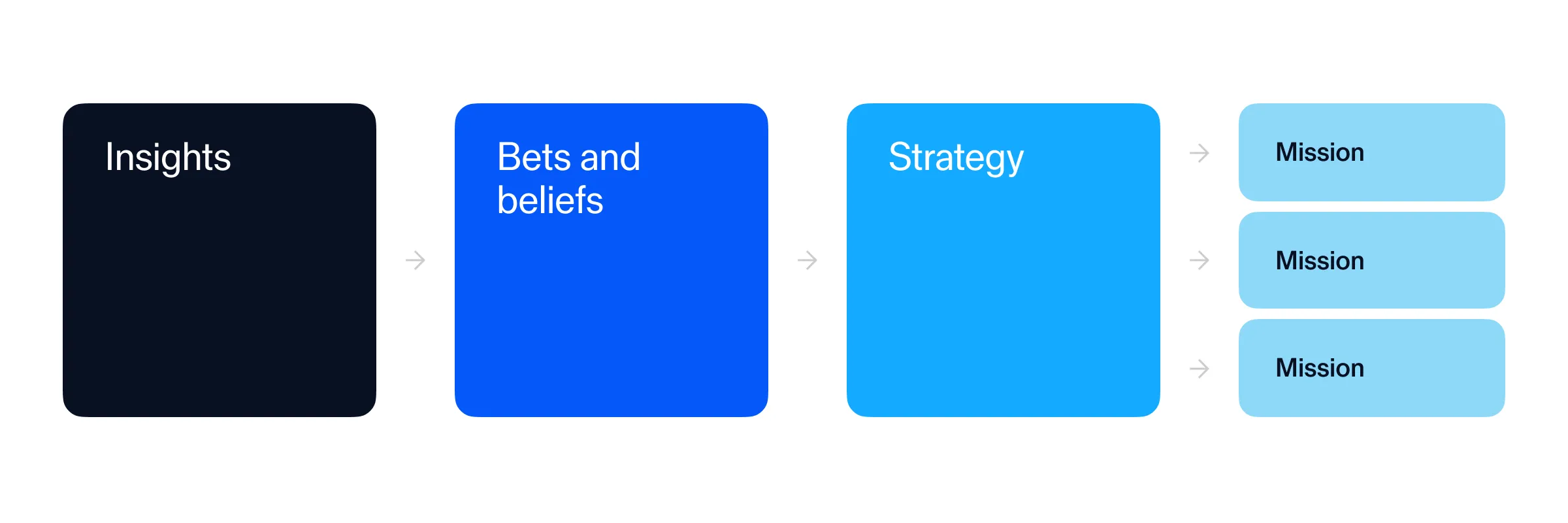
The full DIBB journey takes about three to four weeks from start to finish. The DIBB framework allows for both highly bold and visionary beliefs about what the future may bring. It also allows us to understand the small, granular details about our product and users.
It starts with gathering the data and insights into a condensed memo that is shared with the whole team. We publish this memo as an interactive course on Sana. Each team member takes the course so we start from the same page. There are plenty of disagreements and discussions even as we create the memo — that’s why we let the whole journey span over a few weeks. These discussions are some of the most powerful activities we take. With friction comes challenge, and change.
After reading the memo, it’s time to share our beliefs and bets about the next 6-months. Everything is welcome here. Last time we ran the DIBB, we collected close to 100 beliefs and bets — all from a 40-person team. Over team lunches, or Friday drinks, we talk and debate. So, when we arrive at strategy day, our beliefs and bets are ready for investigating. There are few surprises. We’re ready to move.
Strategy day – a Sana ritual
Our strategy days are special rituals. This is one of few days in the year that we all get into the same room together. We agree on the strategy ahead, then form our teams (or missions as we call them) around that strategy. During the day, each team sets their hero metric, the upcoming 6 months, their key milestones, and their team rituals. We present these mission overviews to each other, and then we celebrate.
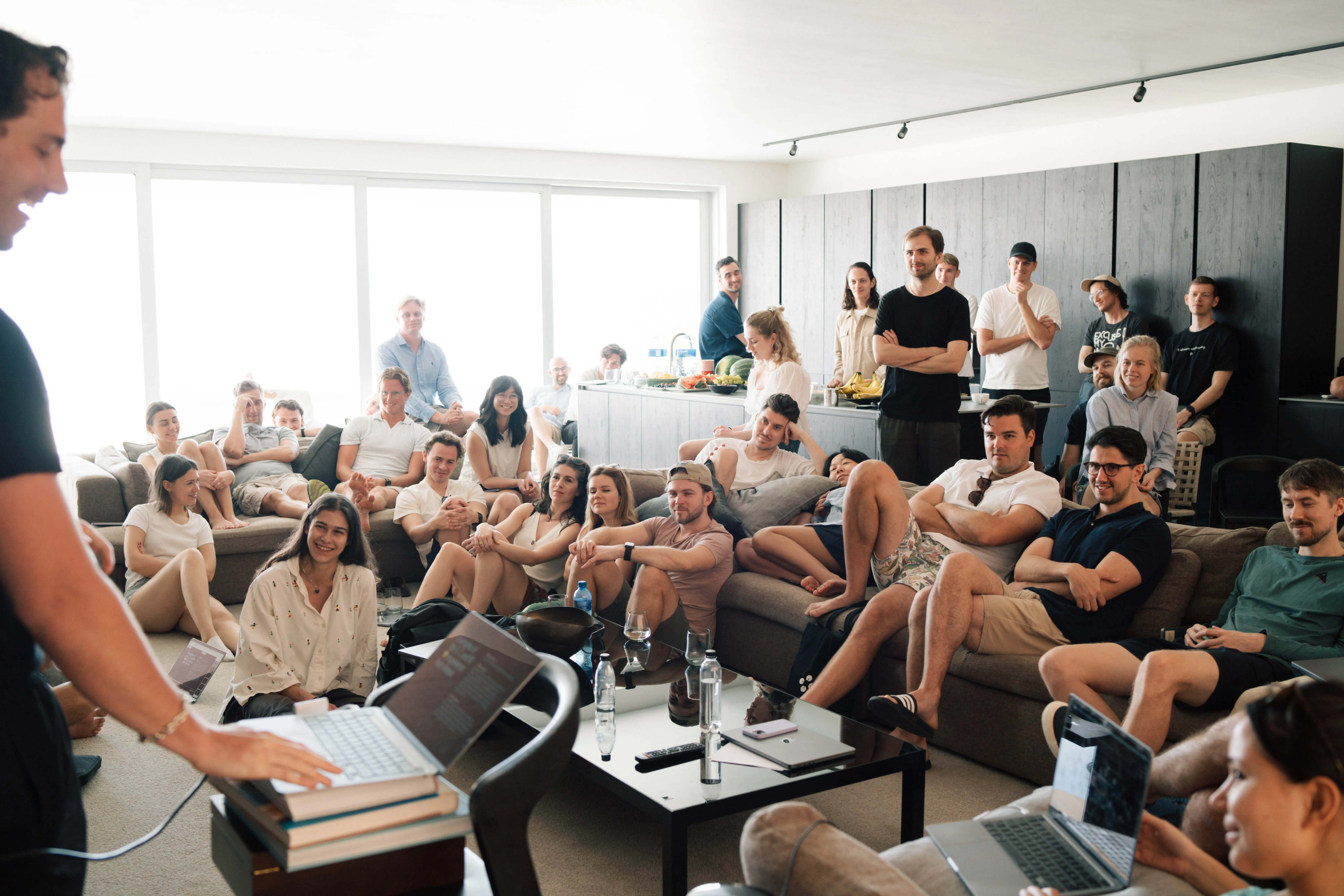
With our 6-month strategy in hand, we move into our 6-weekly sprints.
How to set 6 weeks
Every six-week cycle (which we call Hexads) begins with company-wide team retros and planning sessions. The output of those sessions should be commitments — the goals and tactics that will best drive each team towards their hero metric.
With the commitment list complete, we ask ourselves – is this list achievable? Is everything here in service of the 6-month strategy? The team DRI (Directly Responsible Individual) asks people where they’re experiencing blocks and challenges. When the list is too long, we renegotiate our priorities together. We offer support, and ask for it. Removing tasks, when necessary, creates reliability – balls are rarely dropped, and people enjoy supporting their fellow Sanians.
Every Friday, all team DRIs gather to revisit our commitments and report on weekly progress. This gives everyone has a clear idea of where we’re flowing well, and where people need help. We host and track all team commitments in Sana, so the status is accessible for everyone.
Hexads allow everyone to understand the reality of progress within the mission. Needing help isn’t failure at Sana – it’s a symptom of pushing yourself to achieve greatness. Whether that’s removing commitments, re-prioritizing, or realizing we need more support, we're in it together. And when we achieve great things personally, the company benefits. Win-win.
The path to organizational success
The right cadence provides structure for individuals and the company in a virtuous circle. We can work with momentum and course correct whenever new information emerges.
After 18 months of 6/6/6, we’ve observed a number of key benefits.
Data + bold bets = global maxima
At Sana, we’re constantly striving for the bigger opportunity and avoiding incrementalism. This is what we mean by global maxima. It’s another mental model, and another one of our leadership principles.
6/6/6 helps us live by this principle because it encourages us to make bold bets every six months. That’s what the DIBB framework is all about. Of course, we’re data-informed and always listening to customer feedback. But we also dare to go after step-change opportunities.
Sana Live is one of the best examples of us searching for global maxima. It’s Sana’s built-in video platform for running interactive live sessions. When we came up with the idea just before our strategy day, Live wasn’t a feature that our customers were asking for. But it was an opportunity we uncovered from understanding broader trends around hybrid work and assessing developments in the market. A year on, Sana Live is one the most differentiating and most-appreciated parts of the platform.
Focus + confidence = momentum
Teams can move at an incredible pace when they know what to prioritize. They’re empowered to take decisions. 6/6/6 generates momentum because it sets the longer-term priority while leaving short-term tactics up to the teams. We’re fortunate to have smart, committed, and ambitious people that want to move fast and make a big impact. 6/6/6 enables us to meet those high expectations and keep our Sanians engaged and motivated.
Team + strategy = adaptability
Our 6 month strategy ultimately shapes how we structure our teams, or as we call them, missions. For each of our main strategic bets, we form a mission with an assigned leader (we call them Directly Responsible Individuals, or DRIs).
Each mission has a clearly-defined goal and works autonomously. This ensures that our strategy and bets shape how we build the teams, rather than the opposite. Every team is working to enact the strategy, rather than continuing with roles that aren’t supporting our new objectives.
Every 6 months there’s room for significant change, because we’re always assessing data and making bold bets. If the priorities shift, we can alter the size and shape of teams easily. This results in better business outcomes while creating challenging personal development opportunities. And this means that Sanians can do their life’s work with us.
There’s no silver bullet in creating organizational cadences. We know we’re not perfect, and we’re always seeking ways to improve.
6/6/6 has become the heartbeat for Sana because it keeps us connected to our strategy and mission. It’s exciting, it’s energizing, and it’s helping us to achieve our life’s work. At the end of the day, that’s all we could ever want.
Leadership principles: your most powerful leadership development tool
Read article